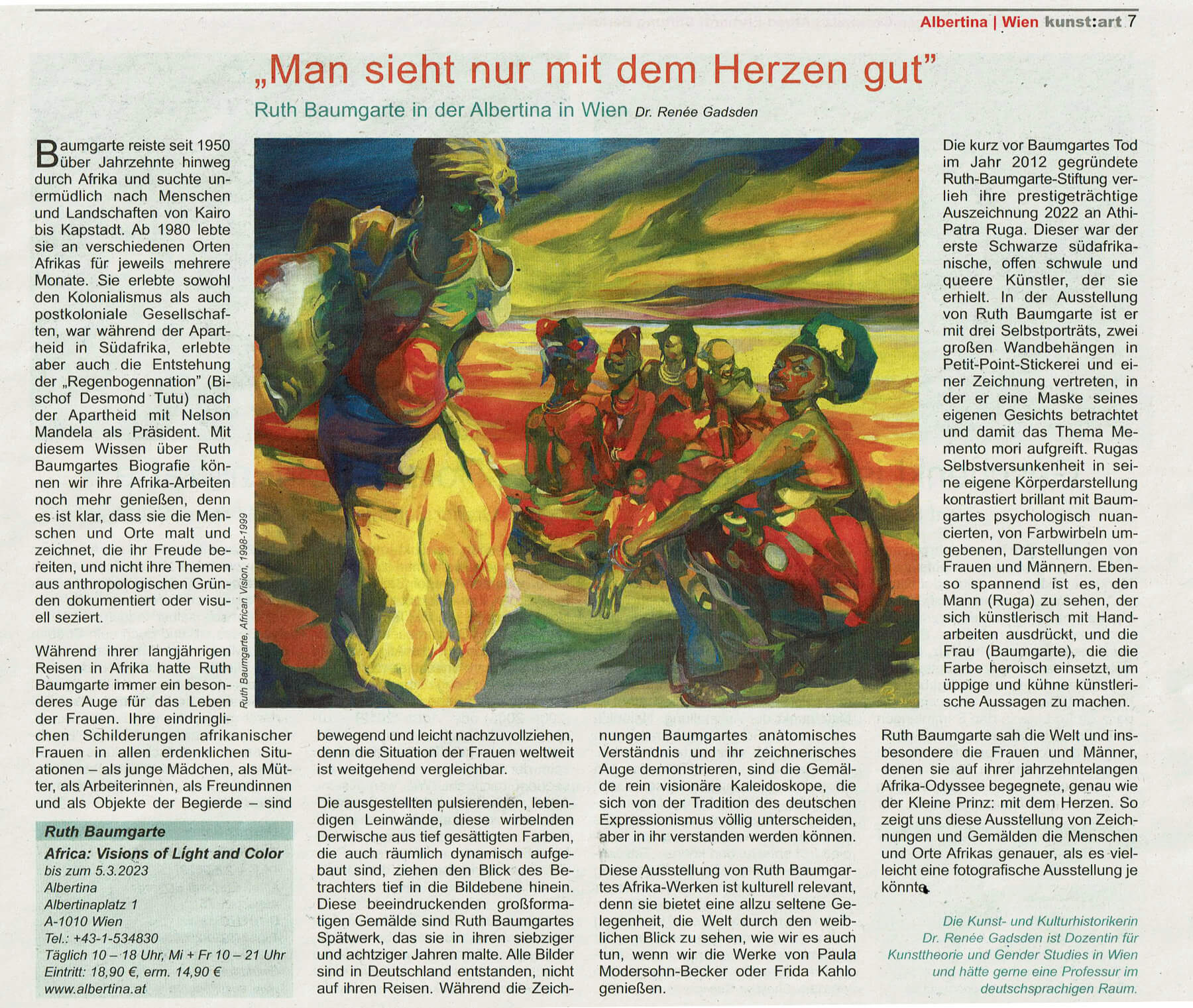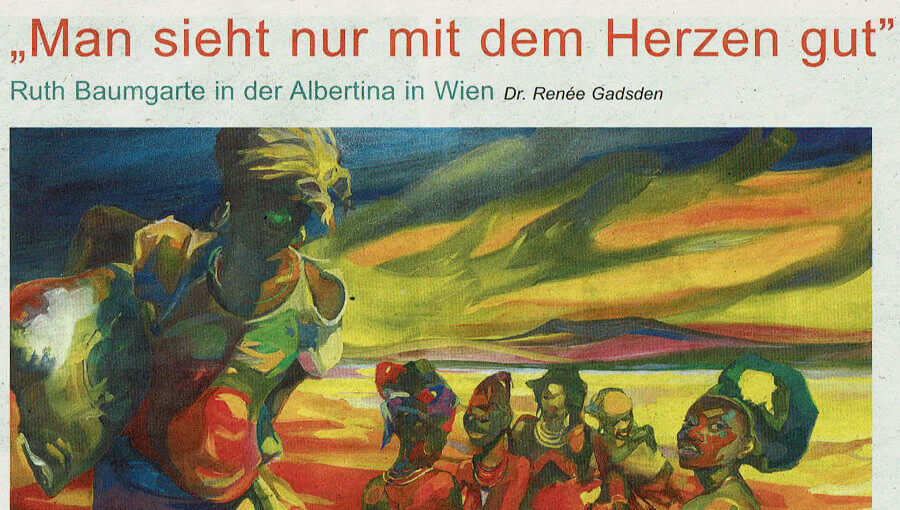aus kunst:art Nr. 89, Jänner – Februar 2023 (ISSN 1866-542 X)
“One sees clearly only with the heart”
Ruth Baumgarte in der Albertina Museum in Wien
Renée Gadsden
For the first time ever, a major museum show of Ruth Baumgarte’s Africa cycle of paintings and drawings can be seen in Vienna.
Baumgarte travelled extensively throughout Africa over decades from 1950 onwards, voraciously seeking out people and landscapes from Cairo to Cape Town. From 1980 onwards, she also lived in various places in Africa for months at a time. She witnessed both colonialism and post-colonial societies, was in South Africa during apartheid but also experienced the birth of the “Rainbow Nation” (Bishop Desmond Tutu) after apartheid with Nelson Mandela as president. Knowing this about Ruth Baumgarte’s biography allow us to enjoy her Africa work even more, because it is clear that she is painting and drawing the people and places that bring joy to her soul—not documenting or visually dissecting her subjects for anthropological reasons.
During her many years of travel in Africa, Ruth Baumgarte always had a special eye for the lives of women. Her haunting depictions of African women in every conceivable situation—as young maidens, as mothers, as workers, as friends and as objects of desire—are evocative and easy to relate to, because the situation of women worldwide is largely a universal one.
The pulsating, vibrant canvases on exhibit, these whirling dervishes of deeply saturated color that spatially are also dynamically built up, draw the viewer’s eye deep into the picture plane. These impressive large scale paintings are Ruth Baumgarte’s late work, painted when she was in her seventies and eighties. All of the paintings were created in Germany, not during her travels. While the drawings demonstrate Baumgarte’s anatomical understanding and draftsman’s eye, the paintings are purely visionary kaleidoscopes, completely different to, but able to be understood in, the tradition of German Expressionism.
This exhibition of Ruth Baumgarte’s Africa works is culturally relevant, because it is an all too rare opportunity to see the world through the female gaze, as we do when we enjoy the works of Paula Modersohn Becker or Frida Kahlo.
The Ruth Baumgarte Foundation, set up shortly before her death in 2012, bestowed its prestigious award for the first time in 2022 to Athi-Patra Ruga, the first Black South African and openly gay and queer artist to win. He is in the Ruth Baumgarte show with three self-portraits, two large petit point embroidery wall hangings and a drawing where he contemplates a mask of his own face in a flippant take on the momenti mori theme. The contrast of Ruga’s self-absorption with his own body and image contrasts brilliantly with Baumgarte’s psychologically nuanced depictions of women and men, surrounded by her vortexes of color. Similarly, it is exciting to see the man (Ruga) expressing himself artistically with needlework, and the woman (Baumgarte) using paint heroically to make lavish and bold artistic statements. Ruth Baumgarte saw the world, and specifically the women and men she encountered on her decade long African odyssey, exactly as the Little Prince did: with her heart. Thus, this exhibition of drawings and paintings shows us people and places in Africa more accurately than perhaps any photographic exhibition of the same ever could.
Art and cultural historian Renée Gadsden is a lecturer in art theory and gender studies in Vienna, and would enjoy having a professorship anywhere in German-speaking Europe.

